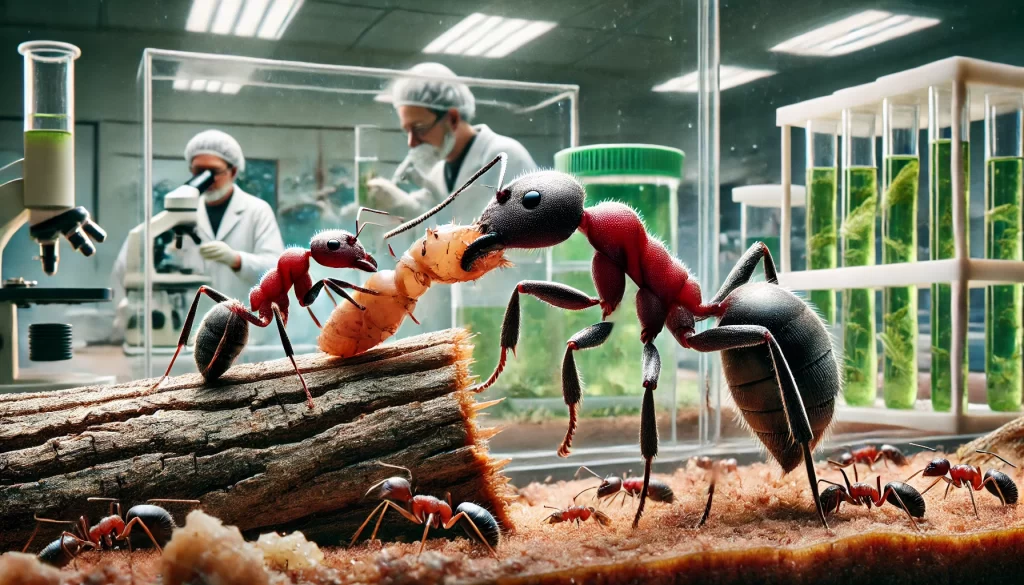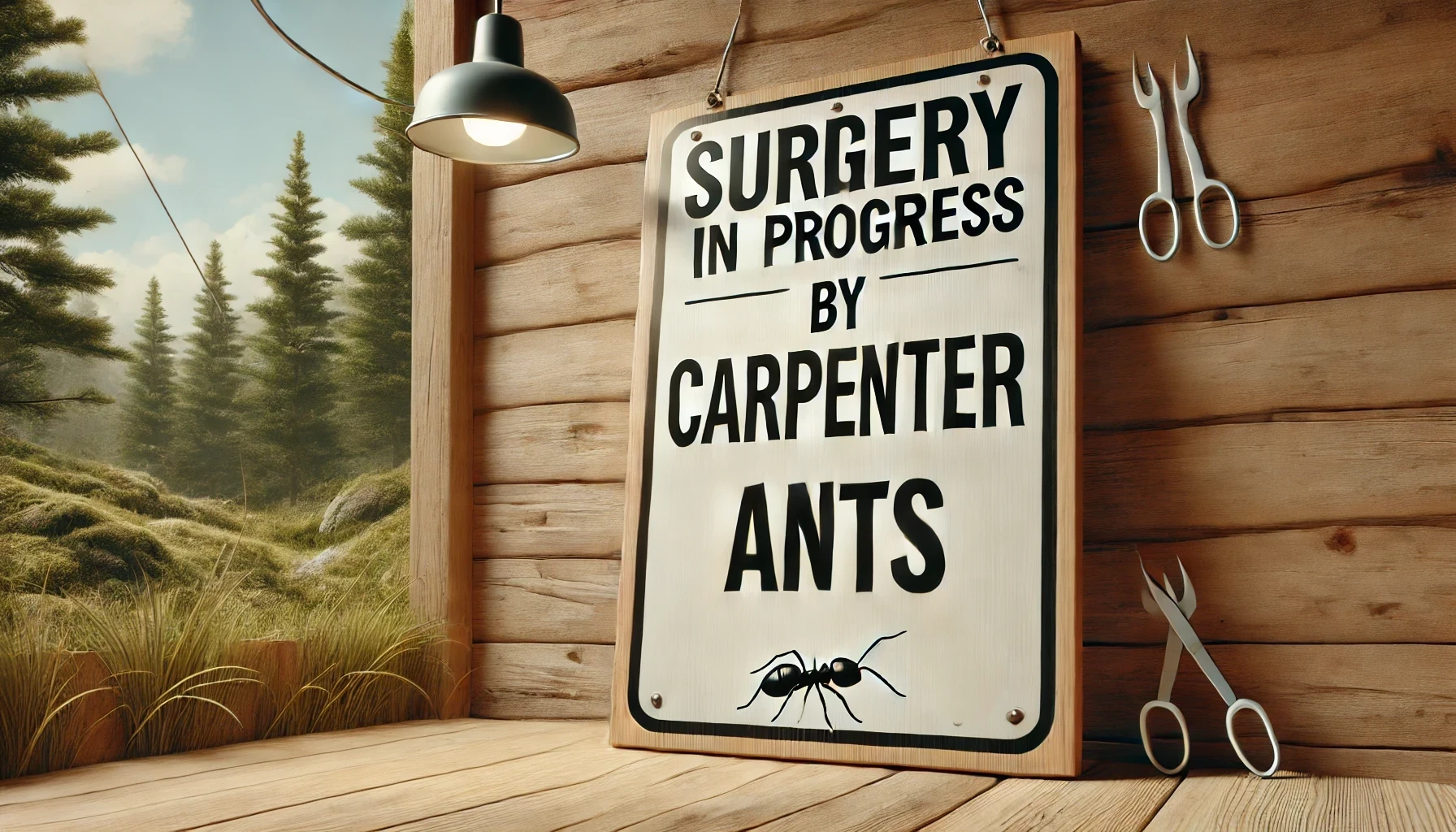Ants are not only fascinating for their complex social behaviors but also for their medical practices. Recently, scientists discovered that Florida carpenter ants (Camponotus floridanus) can perform life-saving amputations on their injured nestmates. This behavior, previously thought to be exclusive to humans, highlights the remarkable abilities of these small insects.
When ants from rival colonies fight, they often sustain leg injuries. Unlike other ant species that clean wounds with antimicrobial secretions, Florida carpenter ants take a different approach. They bite off the injured legs of their nestmates to prevent infections from spreading, effectively performing amputations.
Dr. Erik Frank, a behavioral ecologist at the University of Würzburg in Germany, led the study on this phenomenon. He observed that the ants only amputate legs when the injury is high up on the leg, near the body. This strategy is highly effective because the flow of hemolymph (a fluid similar to blood) is reduced in the upper leg, making it harder for bacteria to spread. In contrast, lower leg injuries are treated with extensive wound cleaning, as bacteria can quickly spread if an amputation is attempted.
The amputations performed by the ants are precise and consensual. An injured ant presents its leg to a nestmate, which then licks the wound before biting off the leg. This procedure lasts about 40 minutes, and almost all ants that receive amputations survive. However, ants with untreated injuries or lower leg injuries that do not receive amputations often die.
Dr. Frank’s team conducted experiments to confirm these observations. They found that ants with femur (upper leg) injuries had a much higher survival rate after amputations compared to those with tibia (lower leg) injuries. The study also showed that amputations prevent the spread of infections, similar to how medieval amputations saved human lives before antibiotics were discovered.

This research not only provides insight into the medical practices of ants but also raises questions about their intelligence and social behavior. Dr. Daniel Kronauer from Rockefeller University, who was not involved in the study, finds the ants’ ability to care for their injured nestmates remarkable. He suggests that other ant species might have similar behaviors yet to be discovered.
By rescuing injured ants, the colony saves energy and resources. Injured ants that survive amputations can still contribute to the colony’s activities, even returning to normal running speeds and taking on dangerous tasks. This altruistic behavior benefits the entire colony and highlights the value of each individual ant.
This discovery adds to our understanding of the sophisticated strategies ants use to care for one another. It shows that even small insects like ants can exhibit complex medical behaviors that rival those of humans.
Key Points:
- Florida carpenter ants perform amputations on injured nestmates to prevent infections.
- Amputations are only performed on upper leg injuries, while lower leg injuries are treated with wound cleaning.
- The procedure is precise and consensual, with injured ants presenting their legs for amputation.
- Ants with amputated limbs have a much higher survival rate.
- This behavior saves the colony energy and resources by allowing injured ants to continue contributing to the colony.
This study, published in Current Biology, provides a fascinating glimpse into the medical practices of ants and underscores the complexity of their social behavior.
This article is based on the following articles:
https://www.washingtonpost.com/science/2024/07/03/carpenter-ant-study-amputation-wounded
https://www.nytimes.com/2024/07/02/science/ants-amputation-legs.html

Background Information
1. Ant Anatomy and Physiology:
- Body Structure: Ants are insects with three main body parts: the head, thorax, and abdomen. They have six legs attached to the thorax.
- Hemolymph: This is the insect equivalent of blood. It circulates nutrients and removes waste but is not involved in oxygen transport like human blood.
- Ant Muscles: Ants have muscles in various parts of their bodies, including their legs, which help move hemolymph and provide strength for movement.
2. Social Structure of Ant Colonies:
- Queen Ant: The queen is the colony’s leader, responsible for laying eggs.
- Worker Ants: These are sterile female ants that perform various tasks, including foraging for food, caring for the queen’s offspring, and protecting the colony.
- Soldier Ants: These ants are typically larger and protect the colony from predators and rival ant colonies.
3. Ant Communication:
- Pheromones: Ants use chemical signals called pheromones to communicate with each other. These chemicals can signal danger, mark trails to food sources, and convey other important information.
- Touch and Sound: Ants also communicate through physical contact and by producing sounds with their bodies.
4. Ant Behavior:
- Foraging: Ants leave the nest to search for food. They lay down pheromone trails to help other ants find the food source.
- Nest Maintenance: Workers maintain and expand the nest, ensuring it is clean and safe for the colony.
- Defense: Soldier ants and some worker ants defend the colony from threats, including other ant colonies and predators.
5. Ants and Their Environment:
- Habitat: Ants can live in a variety of environments, from forests to deserts. Florida carpenter ants, for example, live in rotting wood and are common in southeastern United States.
- Diet: Ants are omnivorous, meaning they eat both plants and animals. Their diet can include nectar, seeds, fungi, insects, and even small animals.
6. Medical Practices in Animals:
- Human Medical History: Before antibiotics were discovered, humans often treated infections by amputating the infected part to prevent the spread of bacteria.
- Animal Medicine: Many animals have evolved behaviors to care for their injuries. For example, some animals lick their wounds to clean them, and certain primates have been observed using leaves as bandages.
7. Evolution and Adaptation:
- Natural Selection: Over time, species develop traits that help them survive and reproduce. This process is called natural selection.
- Adaptations: Traits that improve an animal’s chances of survival are called adaptations. The ability of Florida carpenter ants to perform amputations on injured nestmates is an example of an adaptation that helps the colony survive.
8. Scientific Research and Studies:
- Conducting Experiments: Scientists observe and conduct experiments to learn about animal behavior. They may create controlled environments to study specific behaviors.
- Publishing Findings: Once scientists gather enough data, they publish their findings in scientific journals. This allows other scientists to review and build upon their work.
9. Understanding Infections:
- Bacteria and Pathogens: Bacteria are microscopic organisms that can cause infections. Pathogens are any organisms, such as bacteria or viruses, that cause disease.
Infection Spread: Infections can spread through the body via the bloodstream or other body fluids. Preventing this spread is crucial for survival.

Debate/Essay Questions
- Should the behavior of ants performing amputations on their nestmates be considered a form of animal intelligence or instinctual behavior?
- Does the ability of ants to perform complex medical procedures suggest a higher level of intelligence than previously thought?
Please subscribe to Insight Fortnight, our biweekly newsletter!
